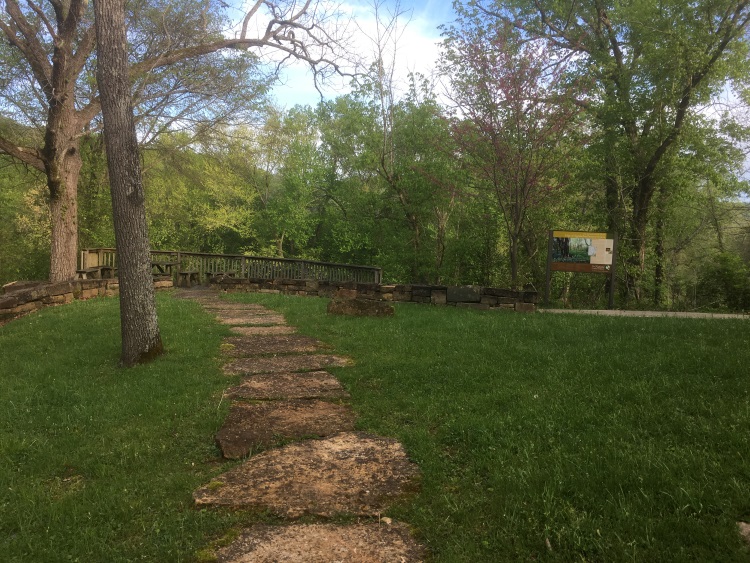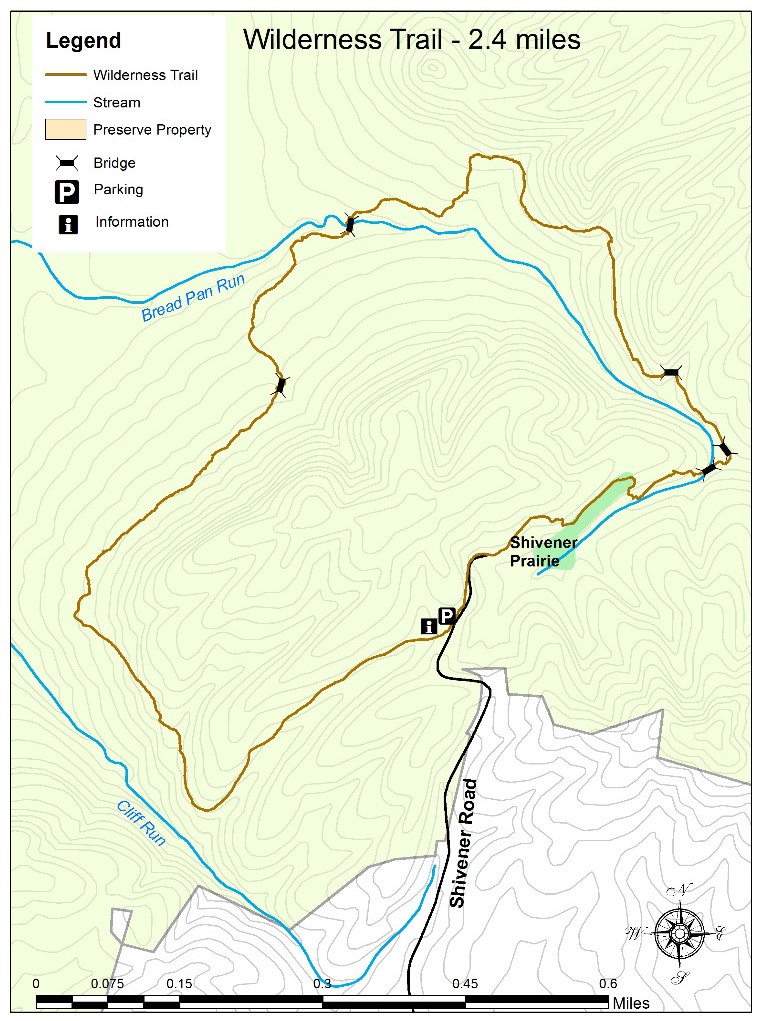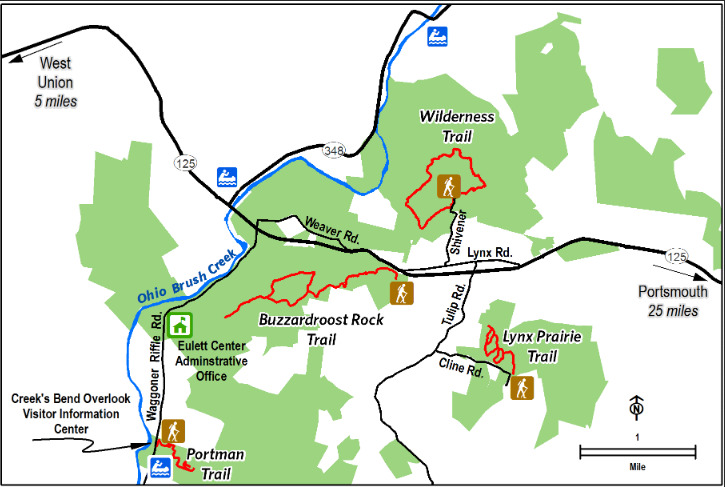Edge of Appalachia Preserve--Wilderness Trail

Edge of Appalachia Preserve--Wilderness Trail
The Nature Conservancy Shivener Road West Union, Ohio 45693
Official WebsiteWilderness Trail map
Edge of Appalachia Preserve Official Website
Edge of Appalachia Preserve (Cincinnati Museum Center) website
Edge of Appalachia video
Edge of Appalachia Preserve Trail Locations map
Also, see all the hotspots at:
Edge of Appalachia Important Bird Area
About this Location
Wilderness Trail
Hikers seeking seclusion will find just what they’re looking for on the Wilderness trail – nobody. The newest trail at the Edge of Appalachia Preserve offers visitors a chance to escape into the woods for some peace and quiet, except for the sounds of local wildlife. The scene here changes with seasons. In spring, the slump rocks that have rolled down the hill are decorated with columbine, rue anemone, large-flowered trillium, goldenrod, and miterwort. Above, migrant warblers flit through the trees, while the distance holds the rattling call of the wild turkey gobbler and the ruffed grouse drumming from his favorite log.
Late fall flowers in these woods are few, but hikers should watch for the delicate blue flowers of the stiff gentian, which blooms into November and, at times, even into January.
The Wilderness trail guides visitors uphill and down into deep woods and past cool glens and gray cliffs of limestone. Along this trail are several stands of white cedar or arbor vitae in what botanists call “Appalachian Bluff White Cedar Woodland.” Today, this type of plant community is globally rare.
Part of the path winds for a half-mile along the rim of a dolomite cliff that drops precipitously for 60 feet into the shaded gorge to Cliff Run. The bedrock here is Bisher Dolomite, sometimes called yellow dolomite because the iron in it turns yellow with oxidations. In autumn, when the leaves fall, you can see from there the distant valley of Ohio Brush Creek off to the west.
Allow 2-3 hours for this trail, so there will be time to stop and observe the flowers and butterflies, listen to the birds, and study the plant communities.
About Edge of Appalachia Preserve
See all hotspots at Edge of Appalachia Preserve
This 20,000-acre preserve system is referred to as “The Edge.” Each separate preserve and trail offers unique qualities. Visitors will enjoy gorgeous views, distinctive geology, and peaceful trails. It is also a great place for birding, especially in spring and fall. Activities include hiking, birding, fishing, kayaking/canoeing, wildlife-watching, nature photography, and observing native plants.
Ancient forests of massive oaks and American chestnut once blanketed nearly all of what would become southern and eastern Ohio. When the first white settlers arrived in the Ohio Valley, wolves and elk wandered this rustic landscape of pristine rivers and fertile forests.
Yet by the early 1900s, about 90 percent of the original forest cover had been cleared to make room for farmland and to feed the iron furnaces of southern Ohio – severely degrading part of North America’s oldest and most biologically diverse forest systems.
Today, Ohio’s Appalachian forests are returning, with nearly 40 percent of the region cloaked in mixed hardwood forest. The Nature Conservancy’s 20,000-acre Edge of Appalachia Preserve is a key component of this recovery process, mending habitats on a large scale and preserving the landscape’s unique natural legacy.
Notable Trails
The AllTrails website has a description and map of a hike using the Wilderness Trail.
Content from Official Website, Edge of Appalachia Preserve Official Website, and Ohio Ornithological Society

